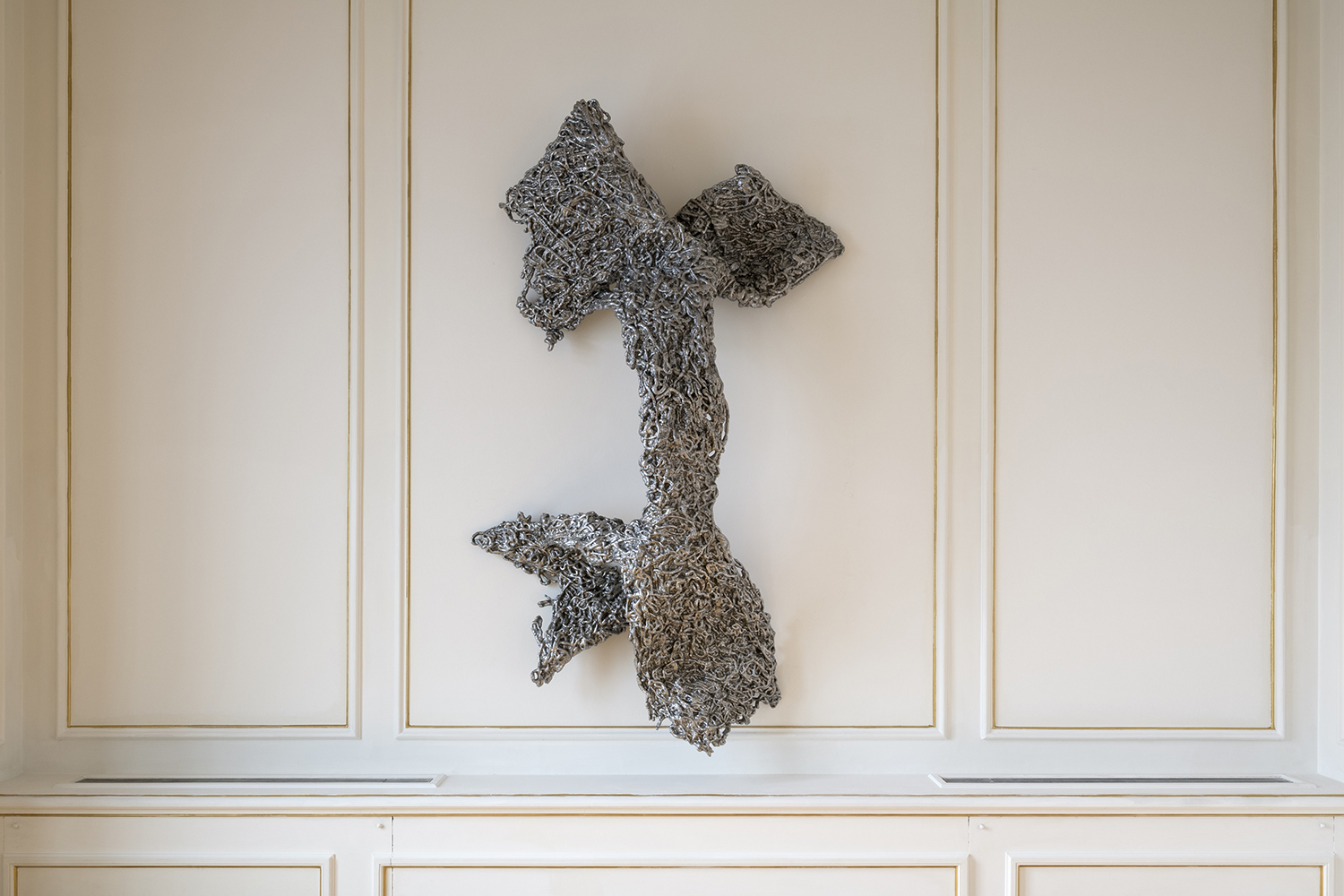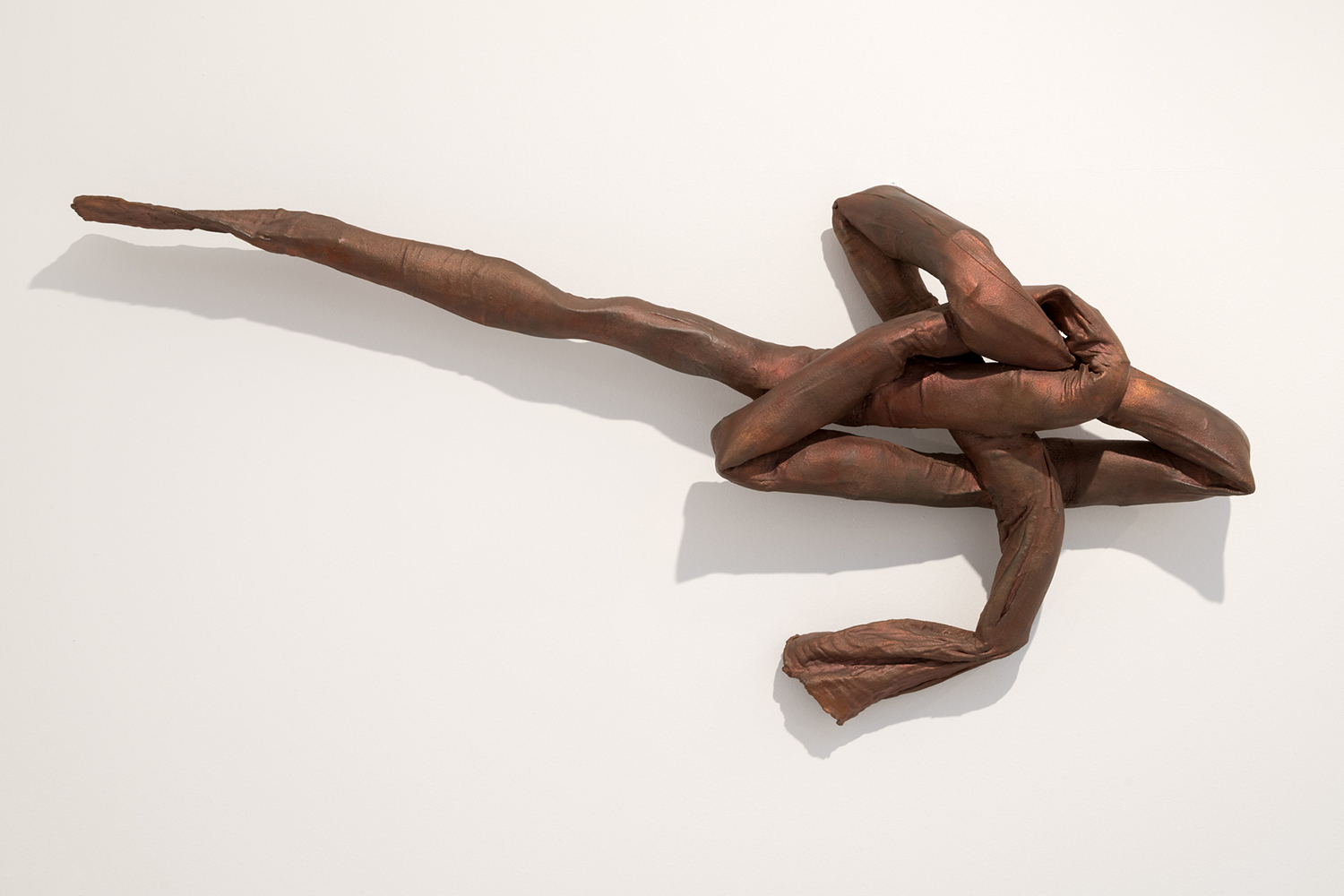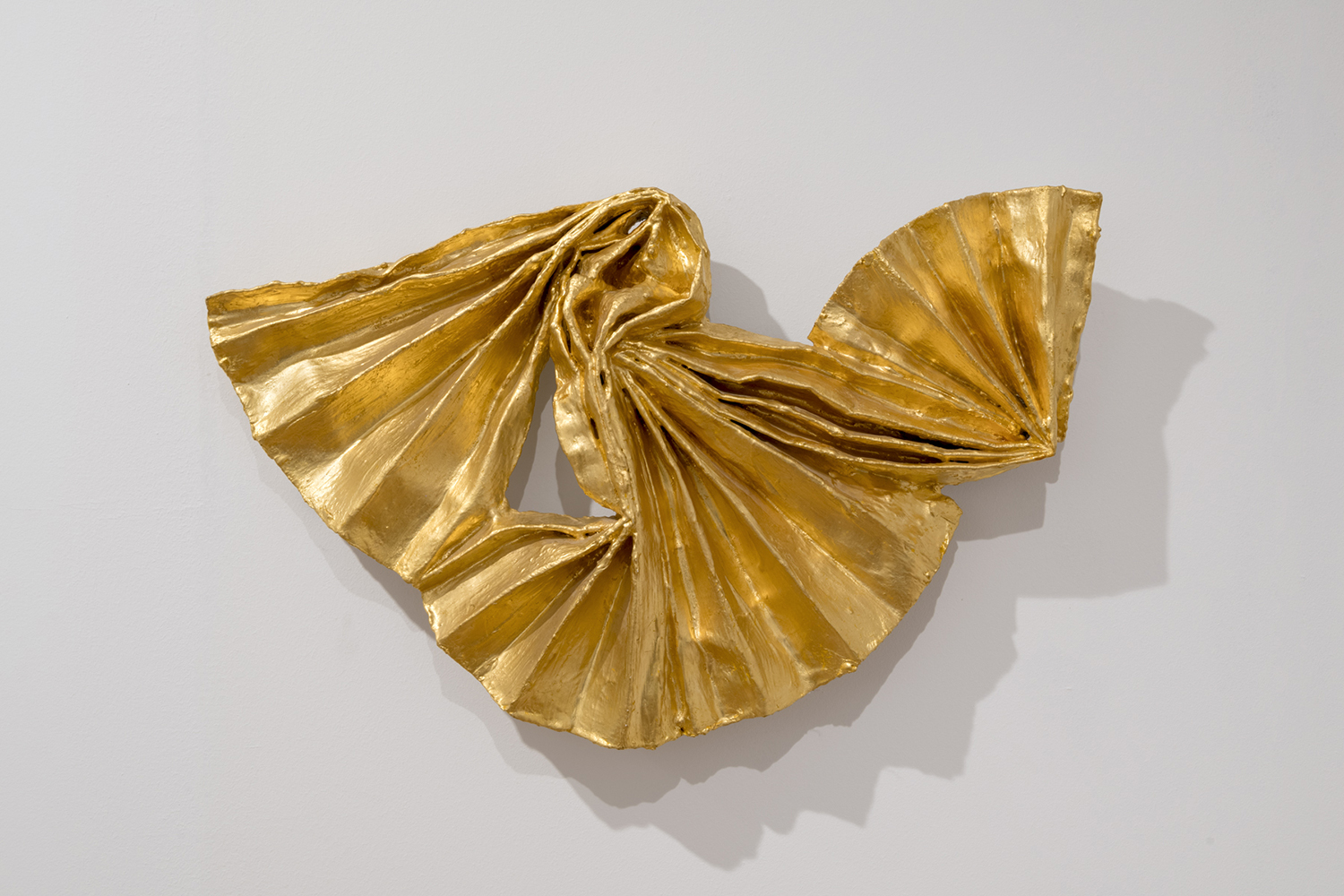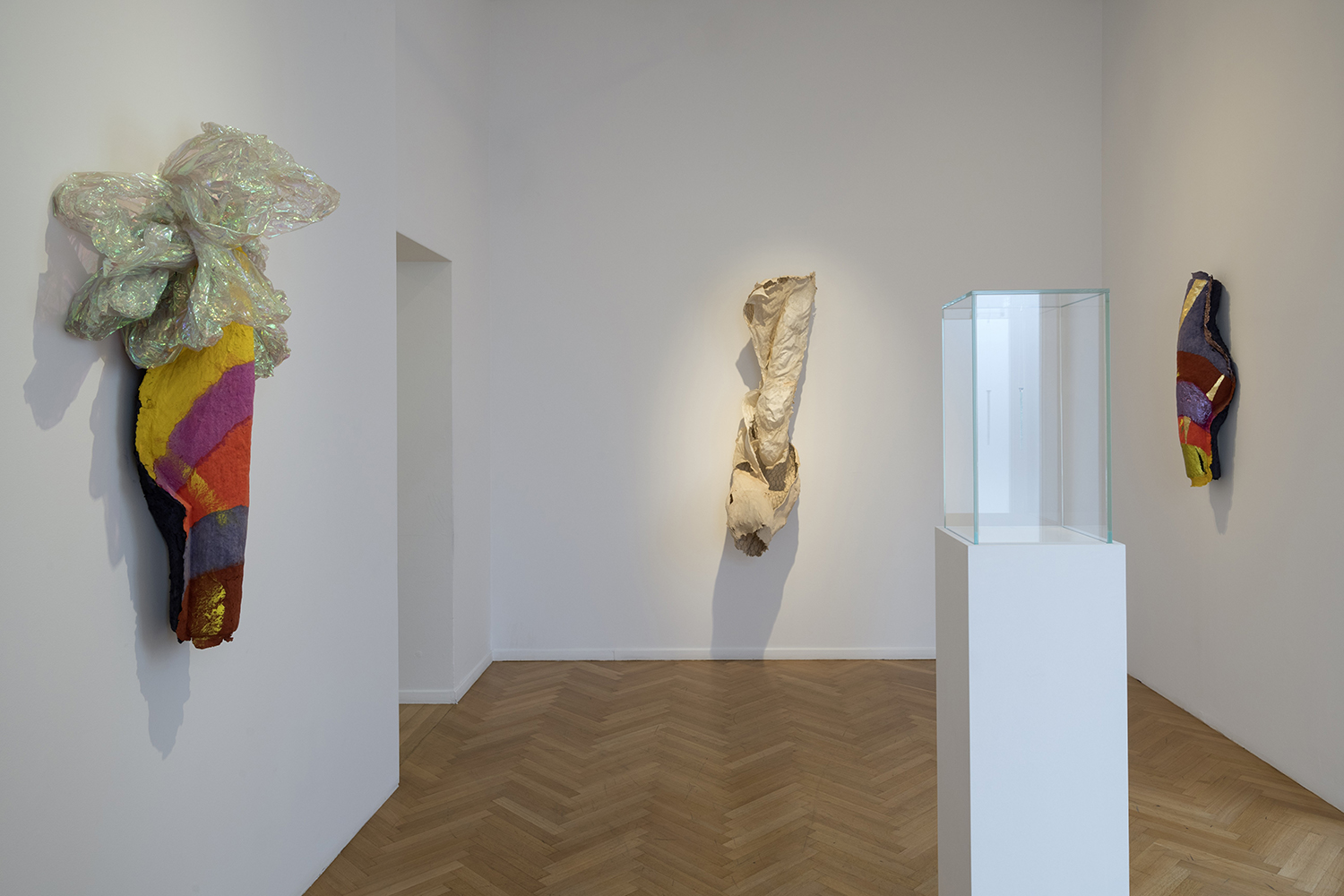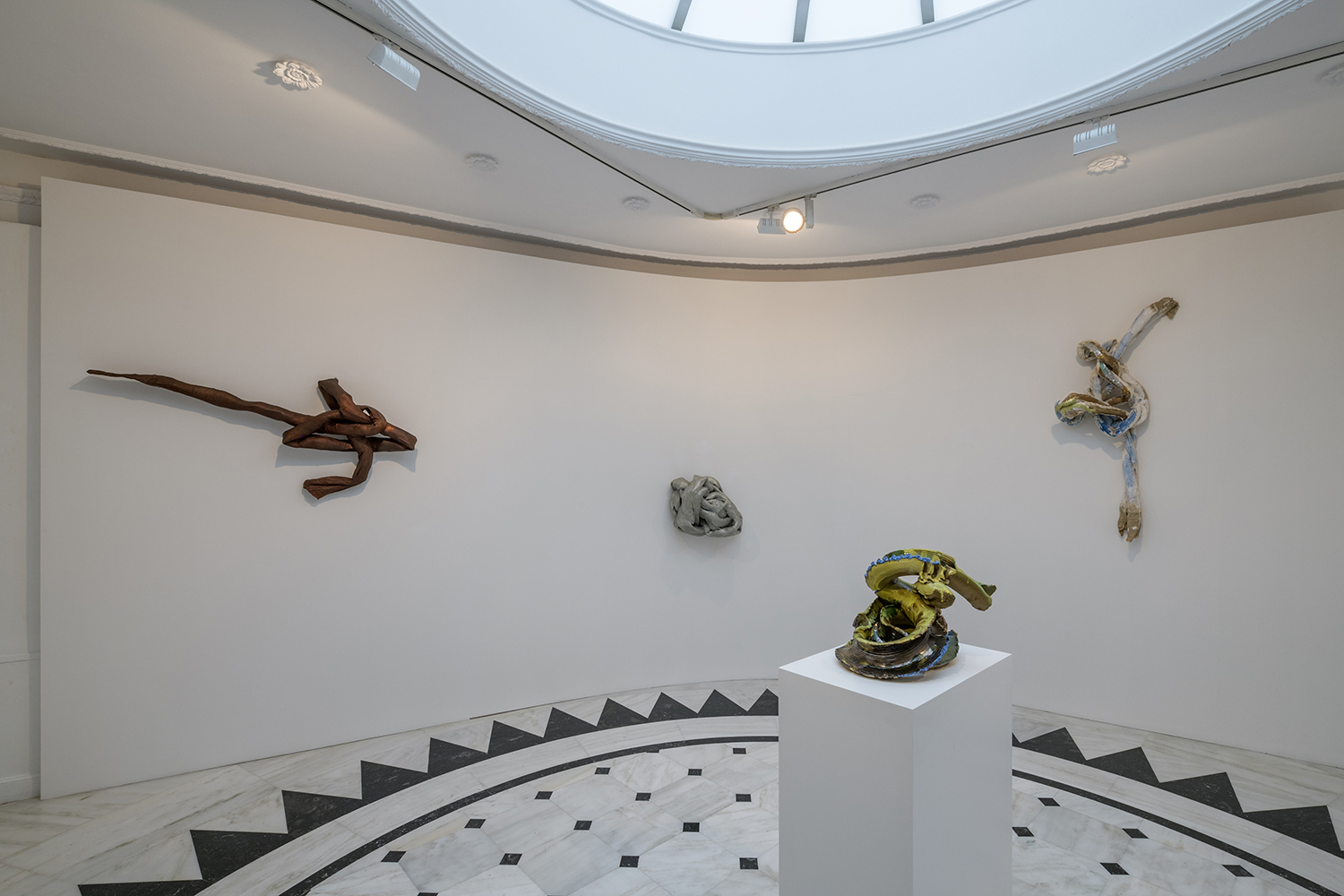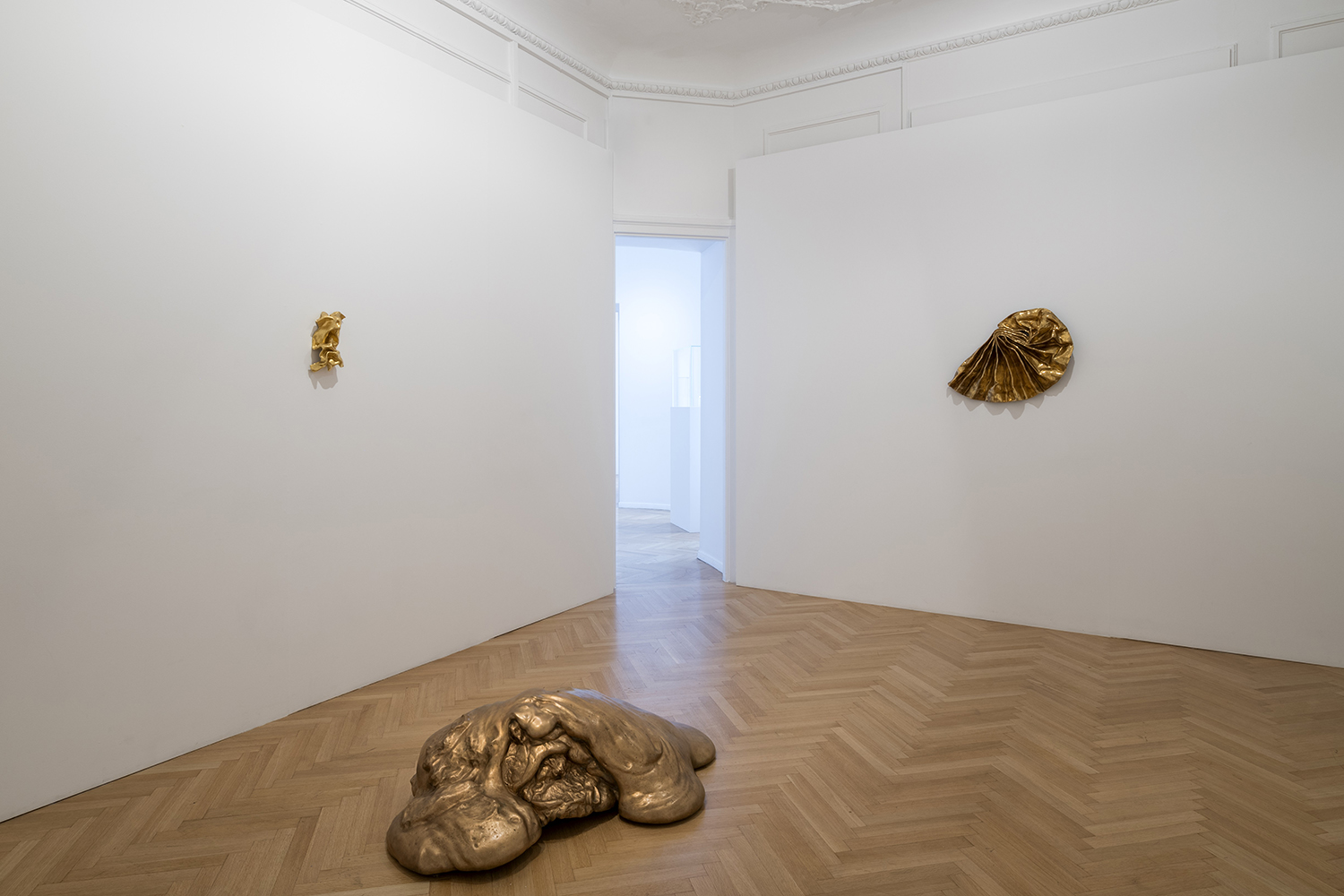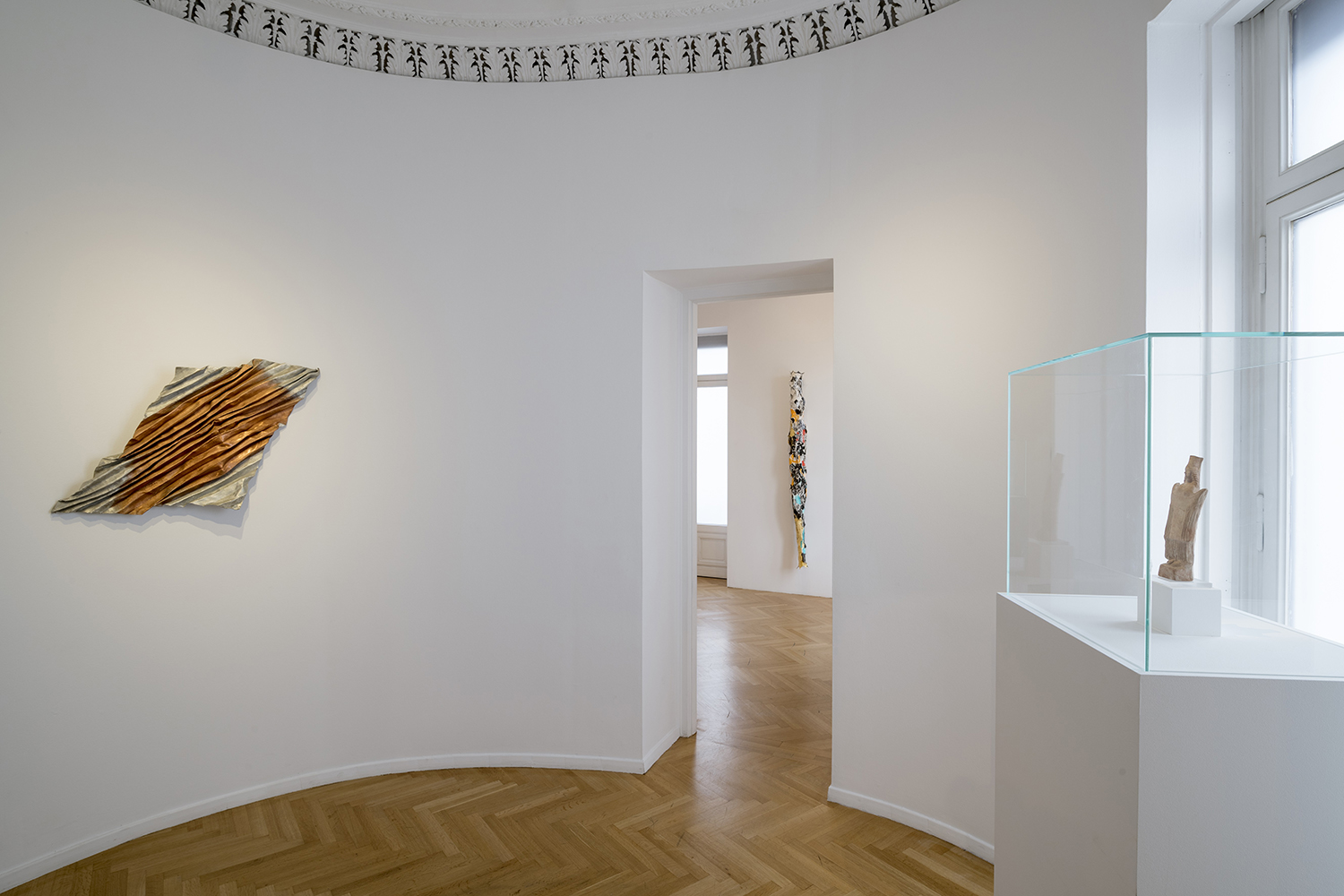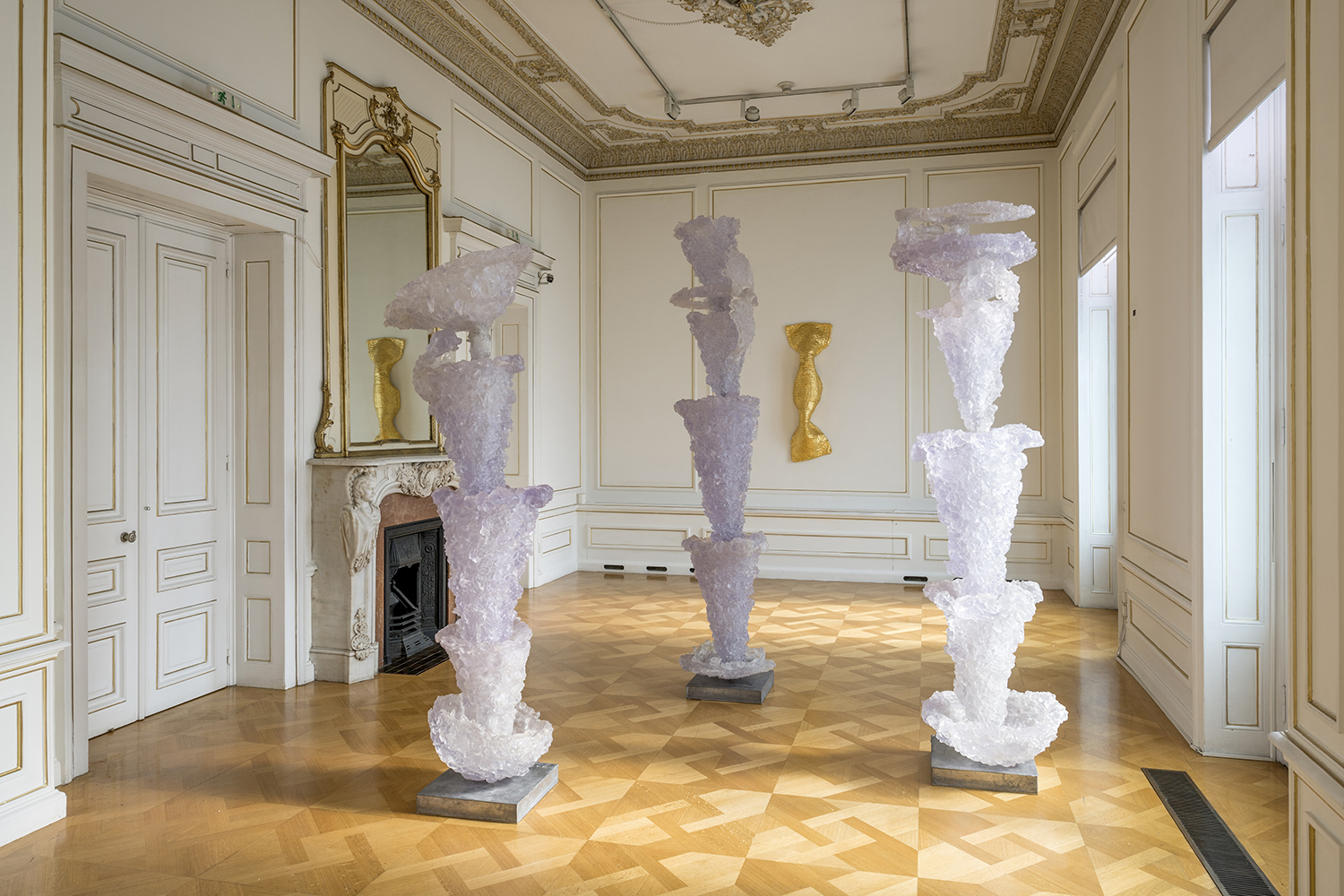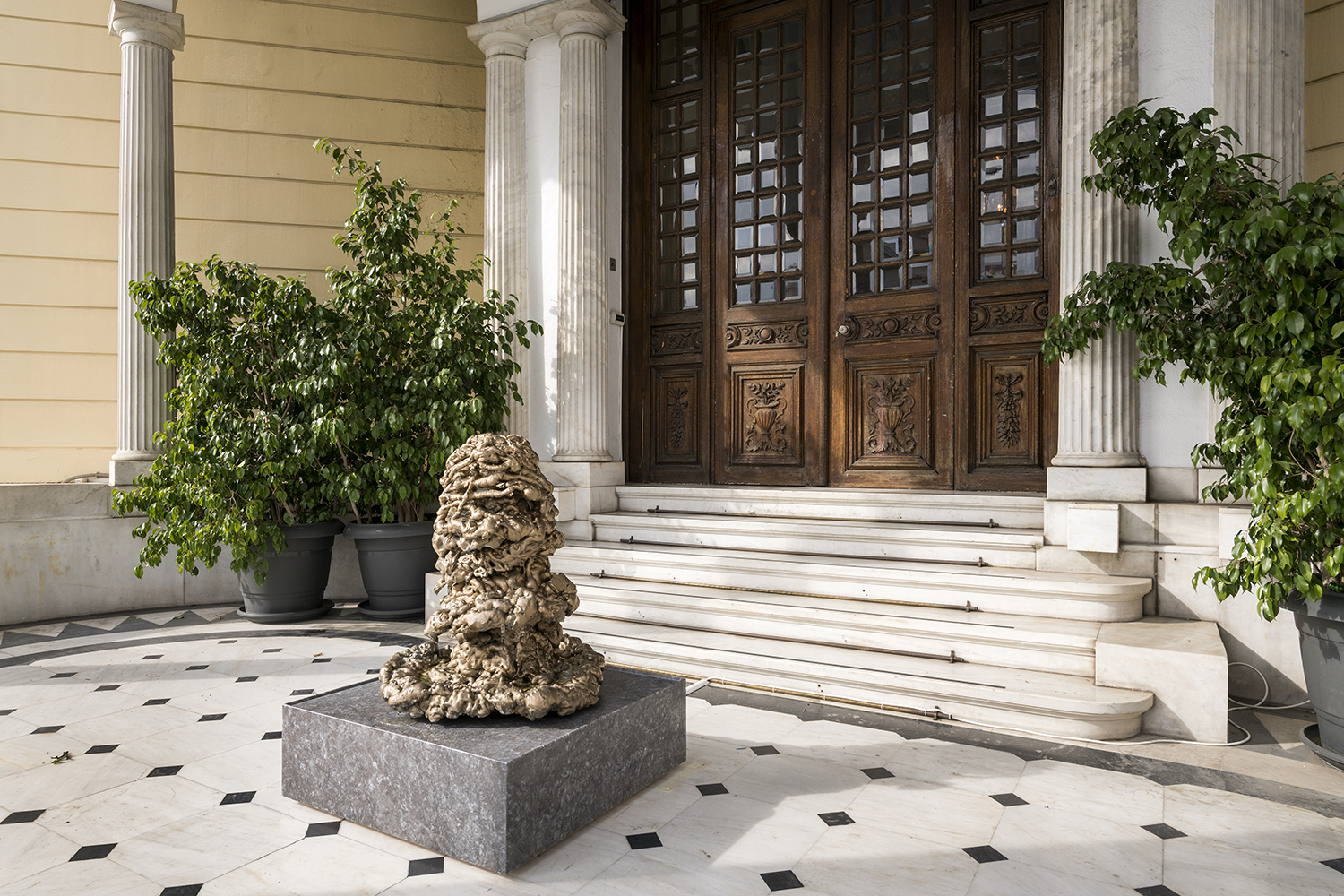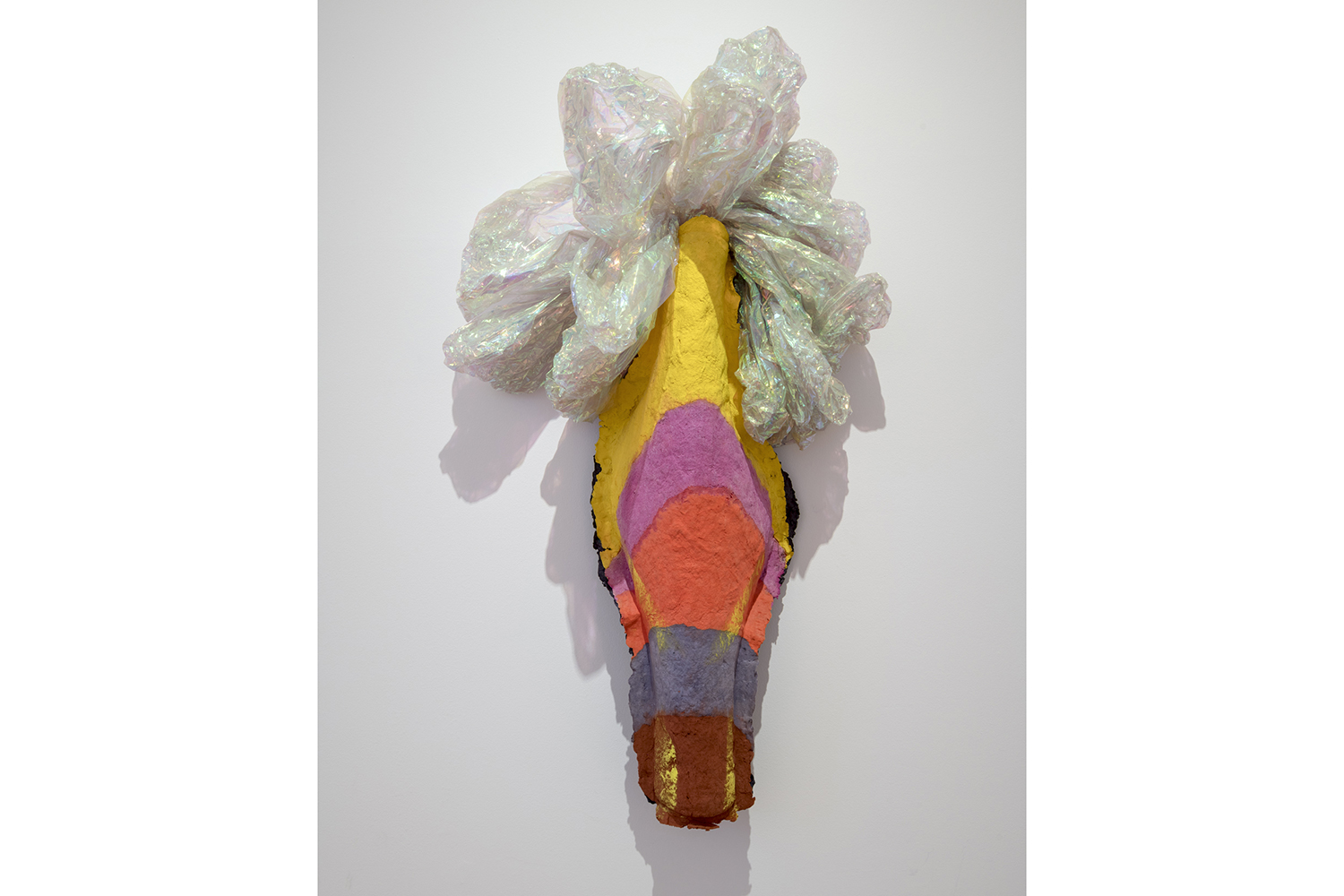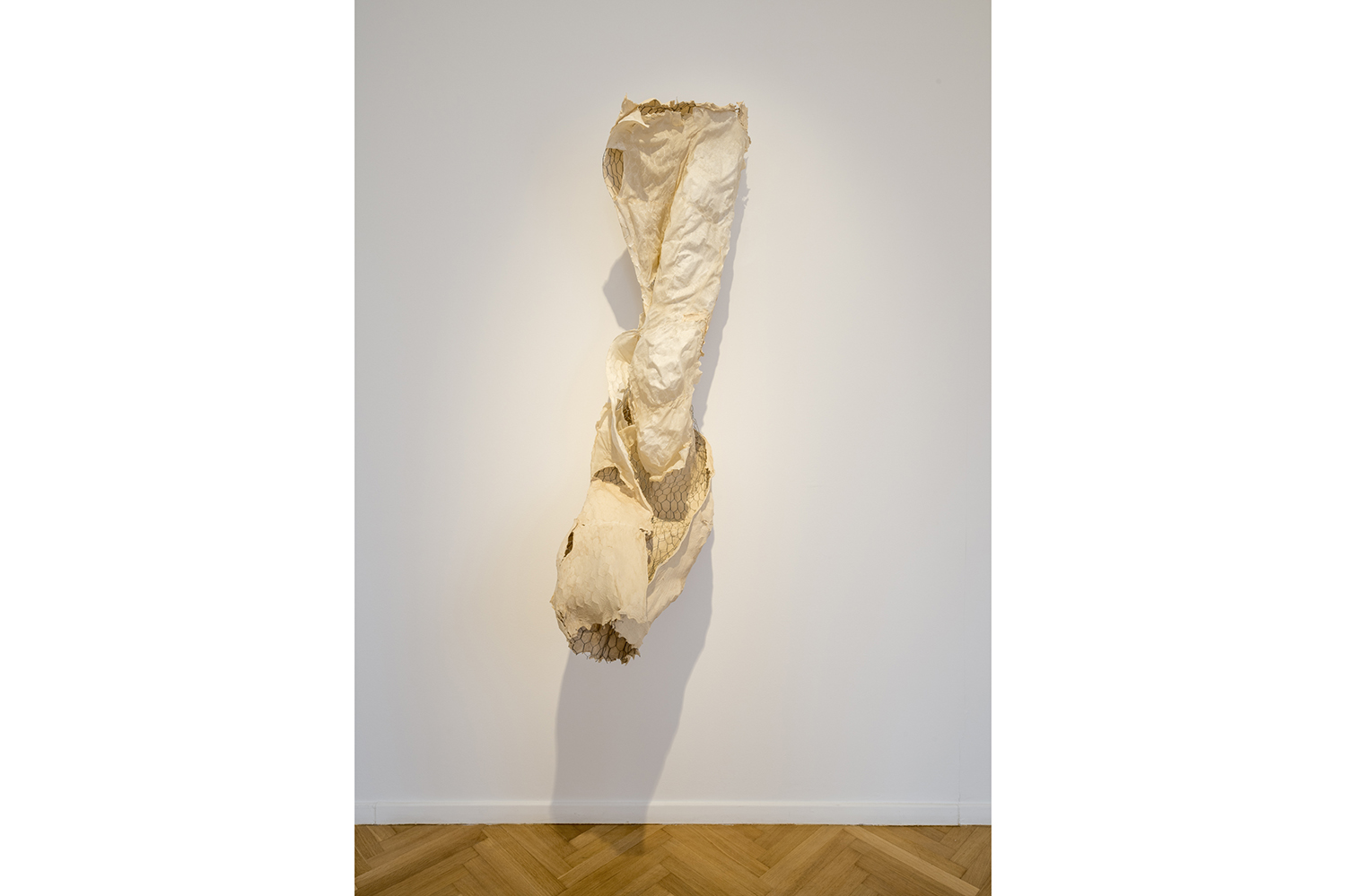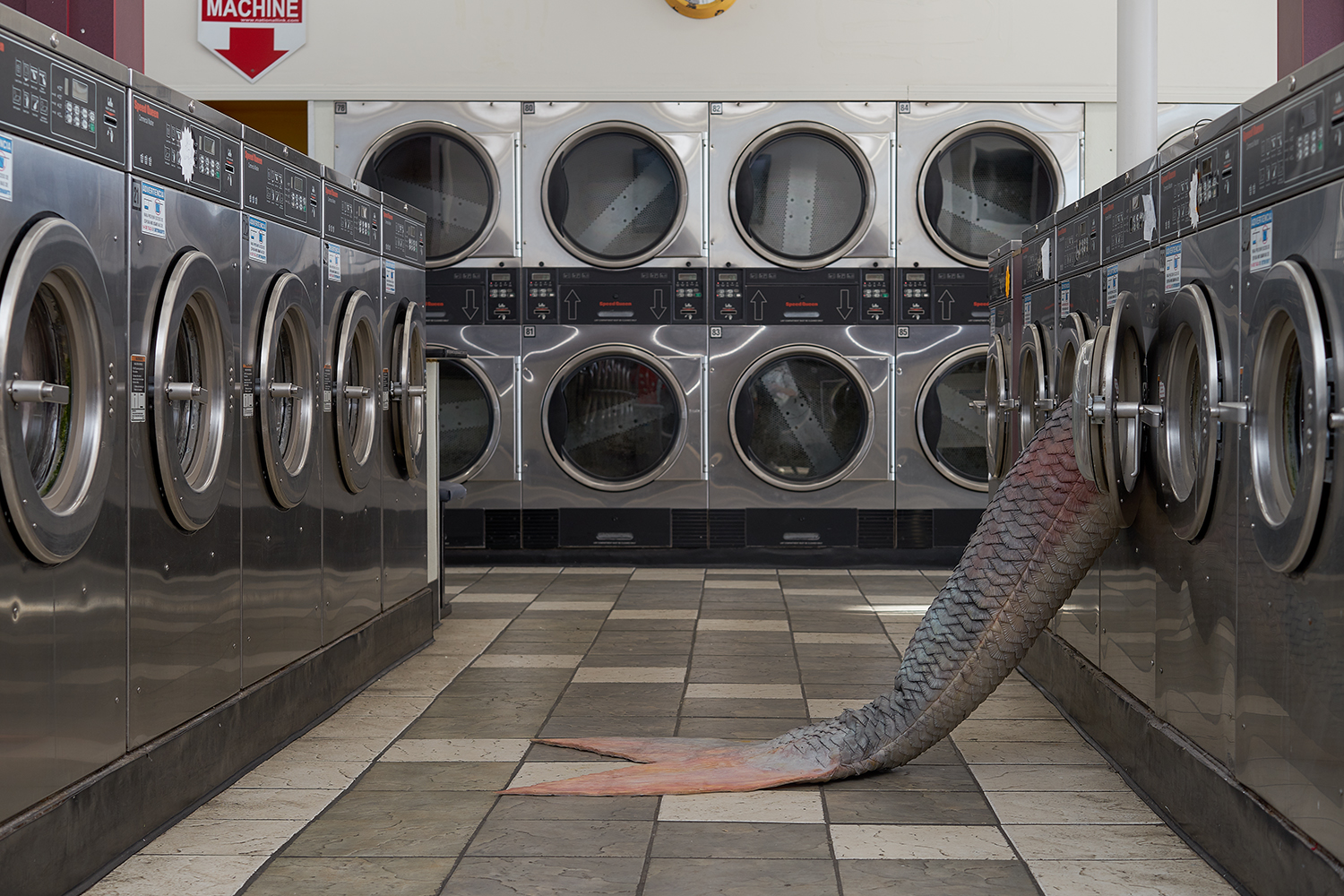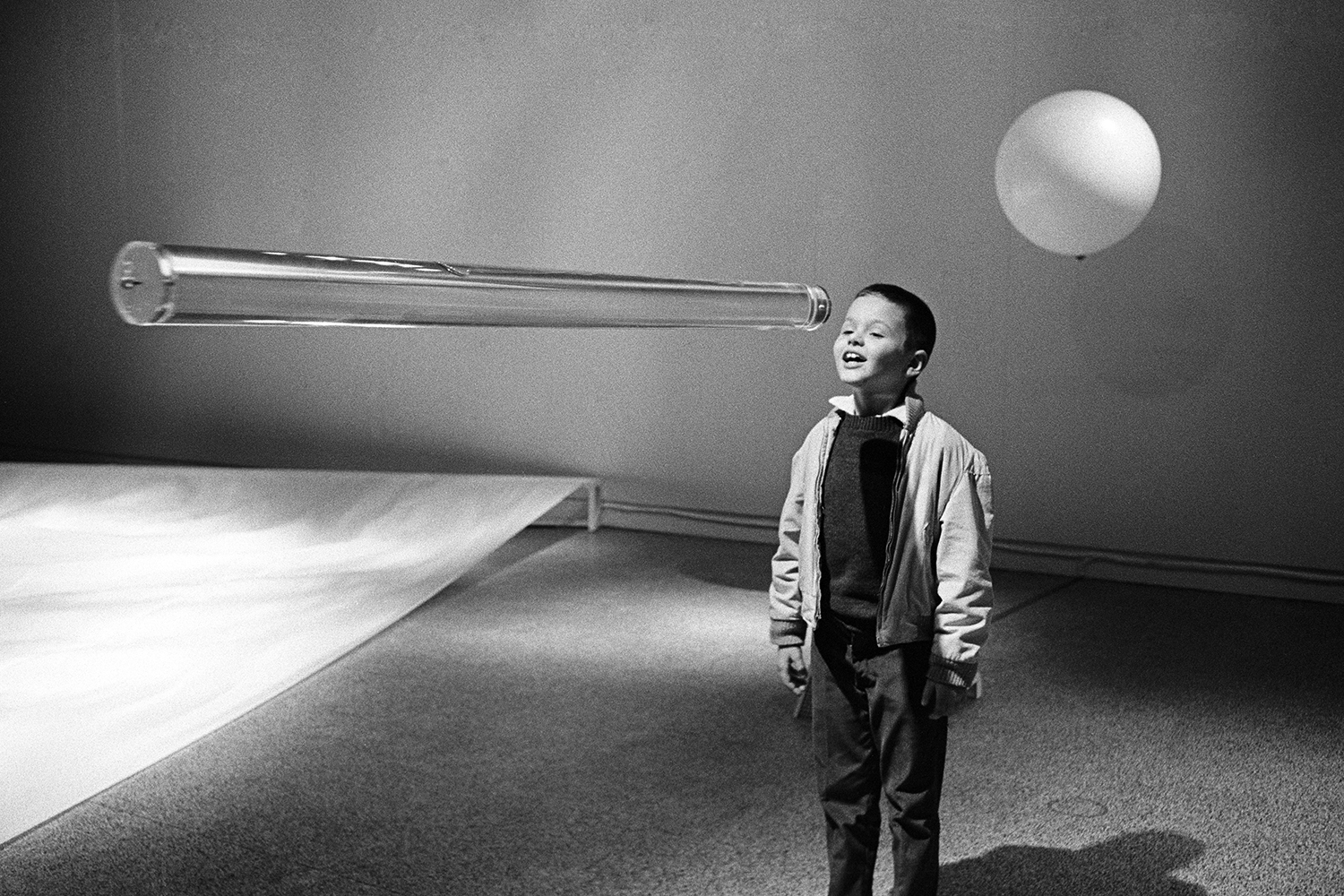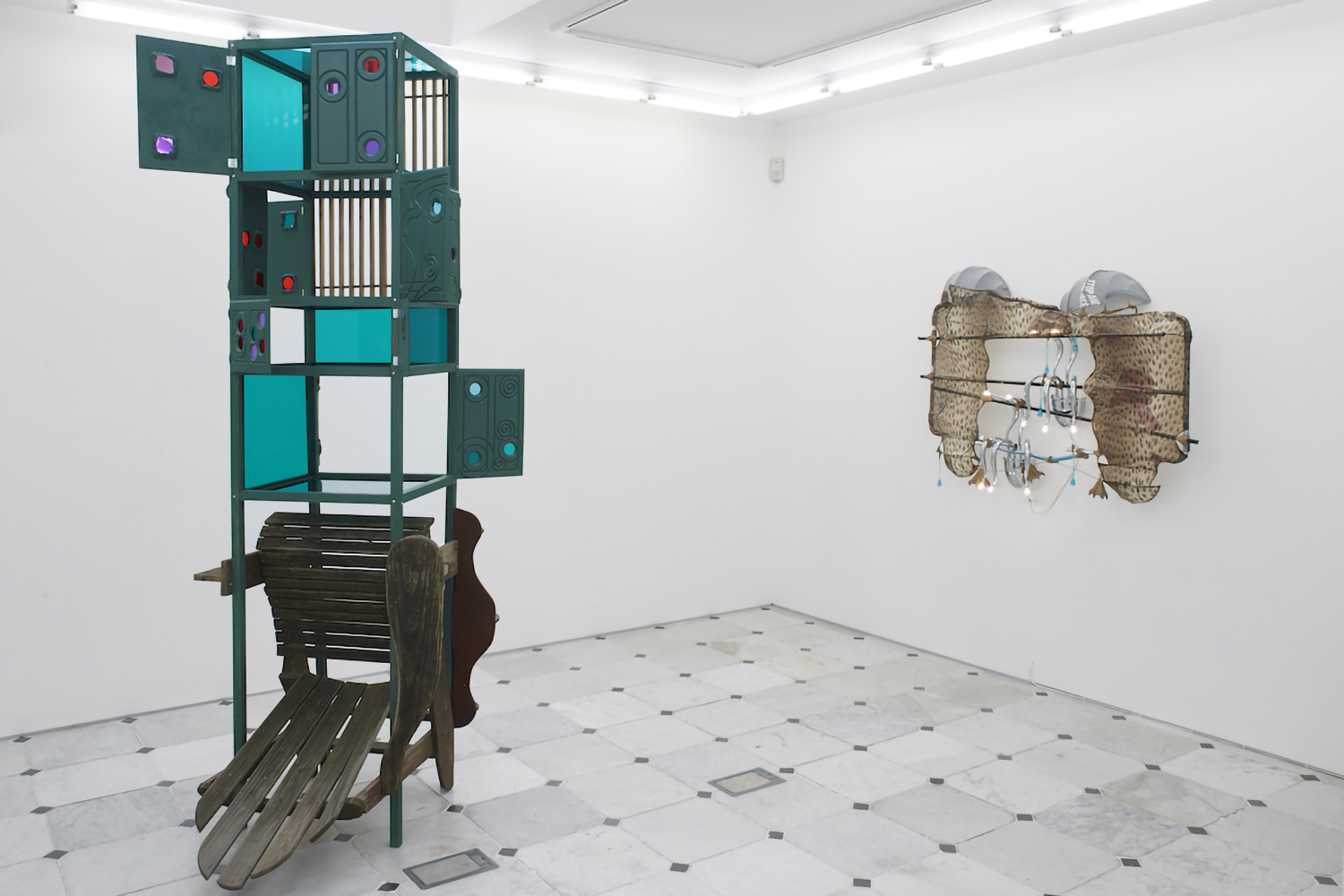A childhood photograph of Lynda Benglis in Greece wearing a fustanella — the traditional male uniform connected with the War of Greek Independence within the Ottoman Empire in the nineteenth century — stands alone in the lobby of the second floor of the Stathatos Mansion, the neoclassical wing of the Museum of Cycladic Art. A few hundred meters away, outside the Presidential Mansion in Athens, you can still see the Evzones, the elite members of the Presidential Guard, posing in “frozen gestures” (to use Benglis’s term to describe her attempts at capturing movement using rigid material) while dressed in the same handmade kilt-like garment. Popular among tourists and a symbol of masculinity and Greek pride, the garment has been used by queer performers to challenge local stereotypes.
Benglis’s photograph seems like a footnote in an exhibition where the body and its politics, an essential part of the artist’s work, is understated in order to highlight parallels between her work and the legacy of ancient Greek art. Benglis is of Greek-American origin, and has herself stated the influence that ancient sculpture, as well as her childhood memories from Kastellorizo Island and the dominant figure of her grandmother, has played in her work. Of course, Benglis’s hybrid — queer, one could say today — bodies appear again and again in many of the thirty-six sculptures in this thoughtful retrospective organized by NEON and curated by art historian Dr. David Anfam. Example include her complex gold-leaf-coated mermaid-like form Knossos (1978) and the sensual The Graces (2003–5), whose divine organic-shaped torsos are made from cast polyurethane; or more hidden and fragmentary works, like her sparkle knots of the 1970s or her iconic early “Fallen Paintings” (Body Contraband, 1969).
In the male-oriented universe of 1960s American minimalism, Benglis claimed an alternative, more fluid use of monumental materials along with more fragile organic and artificial ones. She reappropriated celebrated techniques associated with “action painting” and Abstract Expressionism, bringing viscerally evocative forms in three dimensions. The selection of the works and the narrative of the exhibition successfully surveys the most important aspects of Benglis’s work throughout her practice, framing them in the art-historical context of their making while at the same time letting the works speak — or better, perform — for themselves. There is, however, one omission: the artist’s interest in challenging gendered stereotypes and her controversial explorations of the objectification of the feminine body in the midst of second-wave feminism. This interest was epitomized by her iconic 1974 “centerfold” self-portrait advertisement in Artforum, as well as other provocative advertisements, gallery announcements, and pioneering video works. The omission, although perhaps a fair curatorial choice, makes the exhibition’s attempts to foreground Benglis’s work relative to ancient Greece — highlighted also by the juxtaposition of some works with archaeological artifacts from the museum’s collection — a bit more forced than necessary. Especially in this classical museum environment, the result is a more academic display that forgoes the potential for exploring the work’s importance in relation to present-day queer art concerns.

